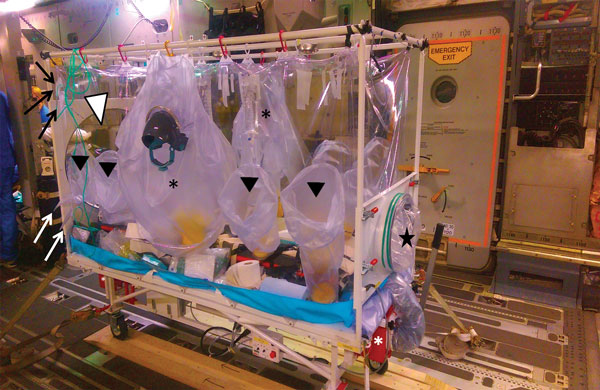Volume 25, Number 1—January 2019
Synopsis
Aeromedical Transfer of Patients with Viral Hemorrhagic Fever
Figure 1

Figure 1. The Trexler Air Transport Isolator, a portable isolation facility used to transfer patients with serious infectious diseases. The sealed system is maintained under negative pressure by a HEPA-filtered ventilation system (red boxes, marked with white asterisk). Portable oxygen cylinders and tubing passed into the envelope through sealed delivery ports (black arrows) permit additional oxygenation of the patient. Additional ports allow cables for monitoring equipment and tubing for parenteral fluids or medication (white arrows). A half-suit on either side of the isolator (black asterisk) enables healthcare workers’ clinical access to the patient, and an additional half-suit can be fitted to the head of the patient for intubation (white arrowhead). Additional arm and glove ports along the side (black arrowheads) allow multiple workers to access the patient simultaneously. Two larger-bore disposable waste areas are available at the foot of the envelope (black star).